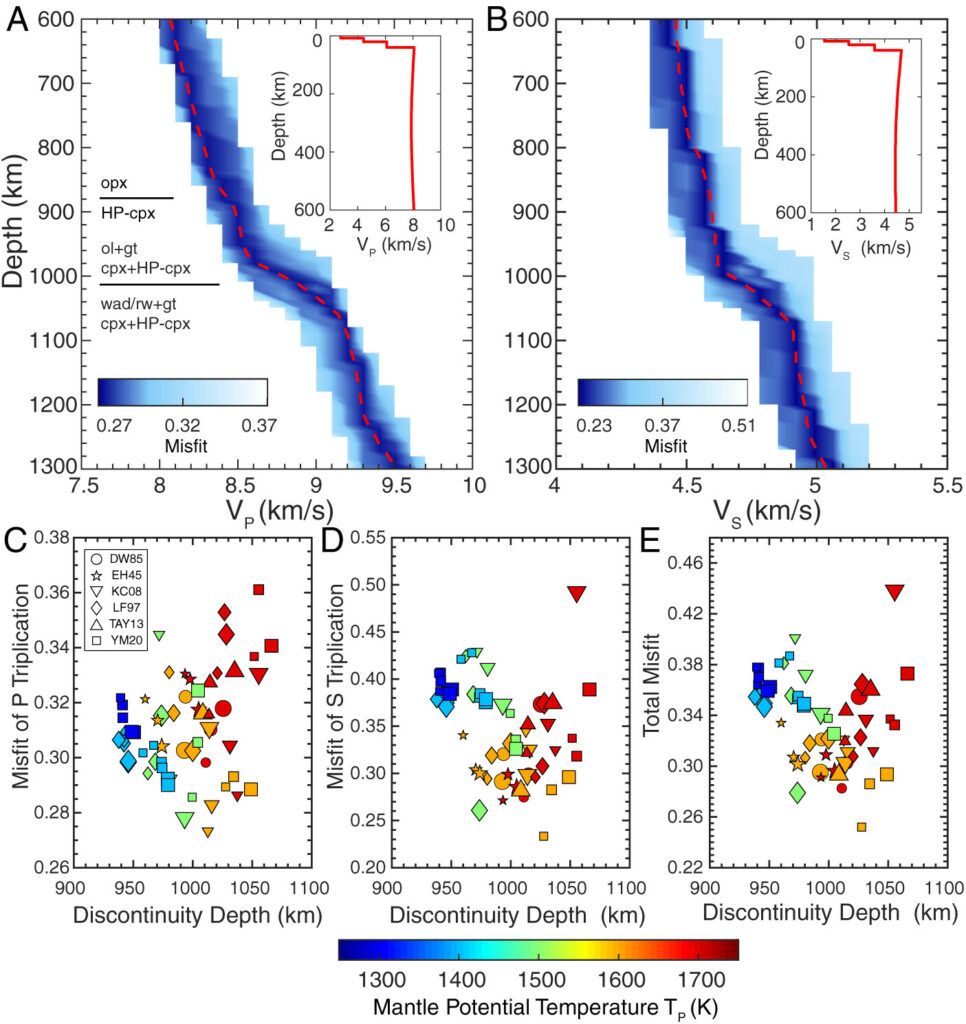Constraining the thermal and compositional state of the mantle is crucial for deciphering the formation and evolution of Mars. Since the depth of seismic discontinuities is sensitive to both mantle temperature and composition, their detection can provide unique constraints on the planet’s interior. Using five teleseismic events recorded on Mars, we observed triplicated P and S waves, which reflect the presence of a seismic discontinuity in the Martian mantle.

Waveform modeling of the triplicated phases revealed a seismic discontinuity at a depth of 1,006 ± 40 km. We found that it matches the expected depth and sharpness of the pressure-induced phase transformation of the mineral olivine (assumed to be dominant in the mantle) to its higher-pressure polymorphs (post-olivine transition). Our modeling indicated a broad gradient across the boundary, in line with the notion that the Martian mantle is more enriched in iron than Earth. I contributed to the writing of the Huang et al. (2022) PNAS manuscript in which these results were presented.
Huang, Q. et al. (2022), Seismic detection of the Martian mantle transition zone by InSight, PNAS, doi:10.1073/pnas.2204474119.































































